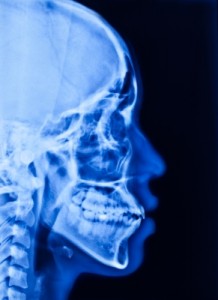 Craniosacral therapy was developed in the early 1900’s by the American osteopathic doctor, Dr. William Sutherland. He appreciated the relationships between the bones of the skull and spine, the connective tissue membranes and the pumping of the cerebral spinal fluid. These patterns of motion and stillness can be used to assess and treat the entire body.
Craniosacral therapy was developed in the early 1900’s by the American osteopathic doctor, Dr. William Sutherland. He appreciated the relationships between the bones of the skull and spine, the connective tissue membranes and the pumping of the cerebral spinal fluid. These patterns of motion and stillness can be used to assess and treat the entire body.
The brain and spinal cord are immersed in a life-sustaining fluid – the cerebral spinal fluid. This fluid circulates to allow for the exchange of nutrients and waste products through a rocking motion originating at the sphenobasilar junction deep inside the skull. As this joint rocks, the cerebrospinal fluid circulates, and there is a subsequent rocking motion in the dura mater (the connective tissue surrounding the brain and spinal cord) and all of the interlinked connective tissues of the body.
Craniosacral therapy is practiced by a variety of Osteopaths, Physiotherapists, Massage therapists and other practitioners who specialize in Craniosacral therapy. The Craniosacral therapist uses a very light touch in order to feel this subtle motion with their hands, like a cork bobbing on the surface of the water. By detecting the body’s quality and direction of internal motion and stillness, the therapist identifies areas in the body that require attention. This may be at the head, neck, back, pelvis, legs or anywhere else in the body. Using light touch and motion once again, the Craniosacral therapist engages the body by echoing its movements, providing the body with feedback and giving it the focused attention and space in needs to access its own healing mechanisms, release stored tensions and injuries, and find healthier internal dynamics.
Craniosacral therapy is a gentle, yet powerful hands-on approach to reestablishing and maintaining your health and well-being.
Image courtesy of Sippakom /FreeDigitalPhotos.net